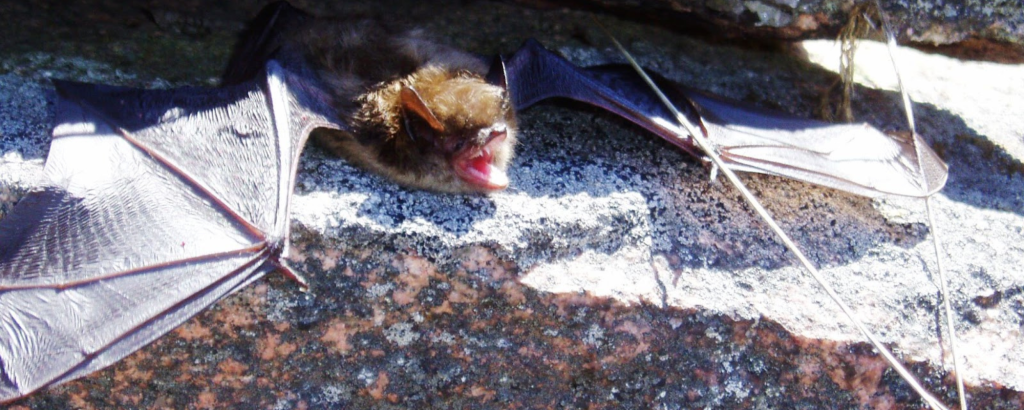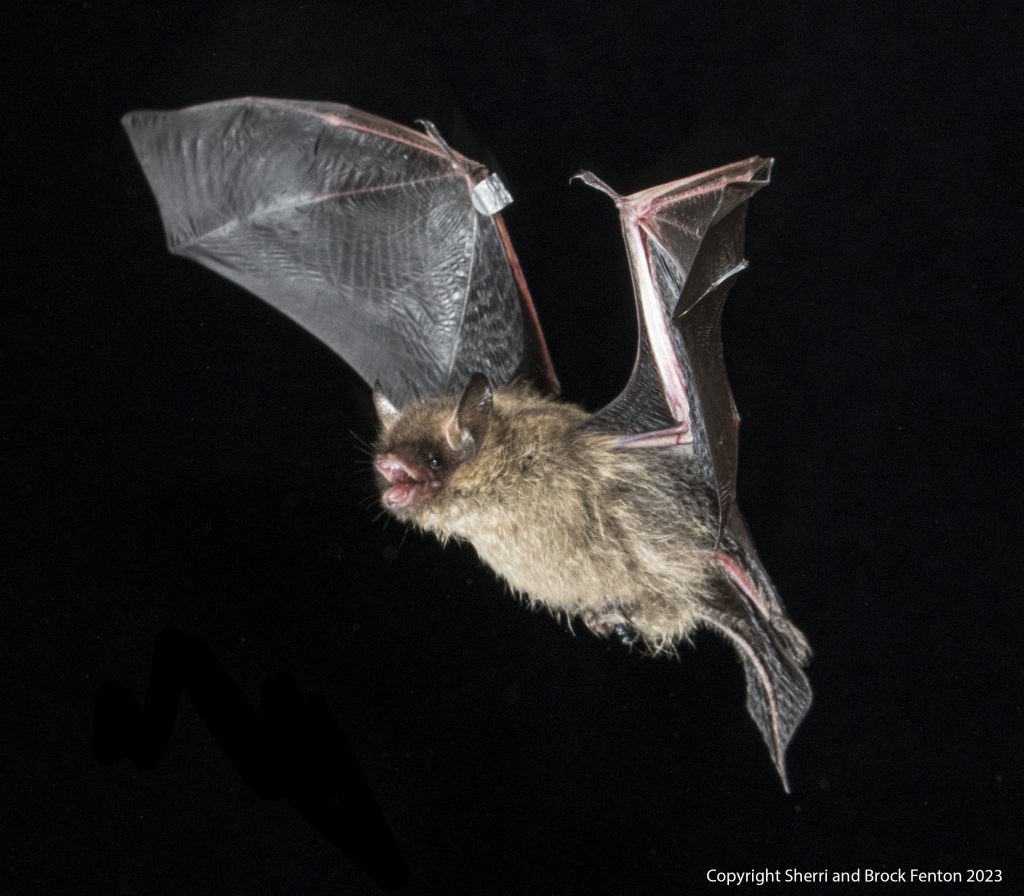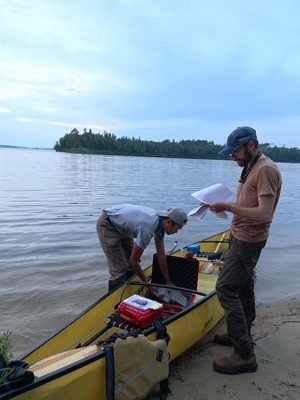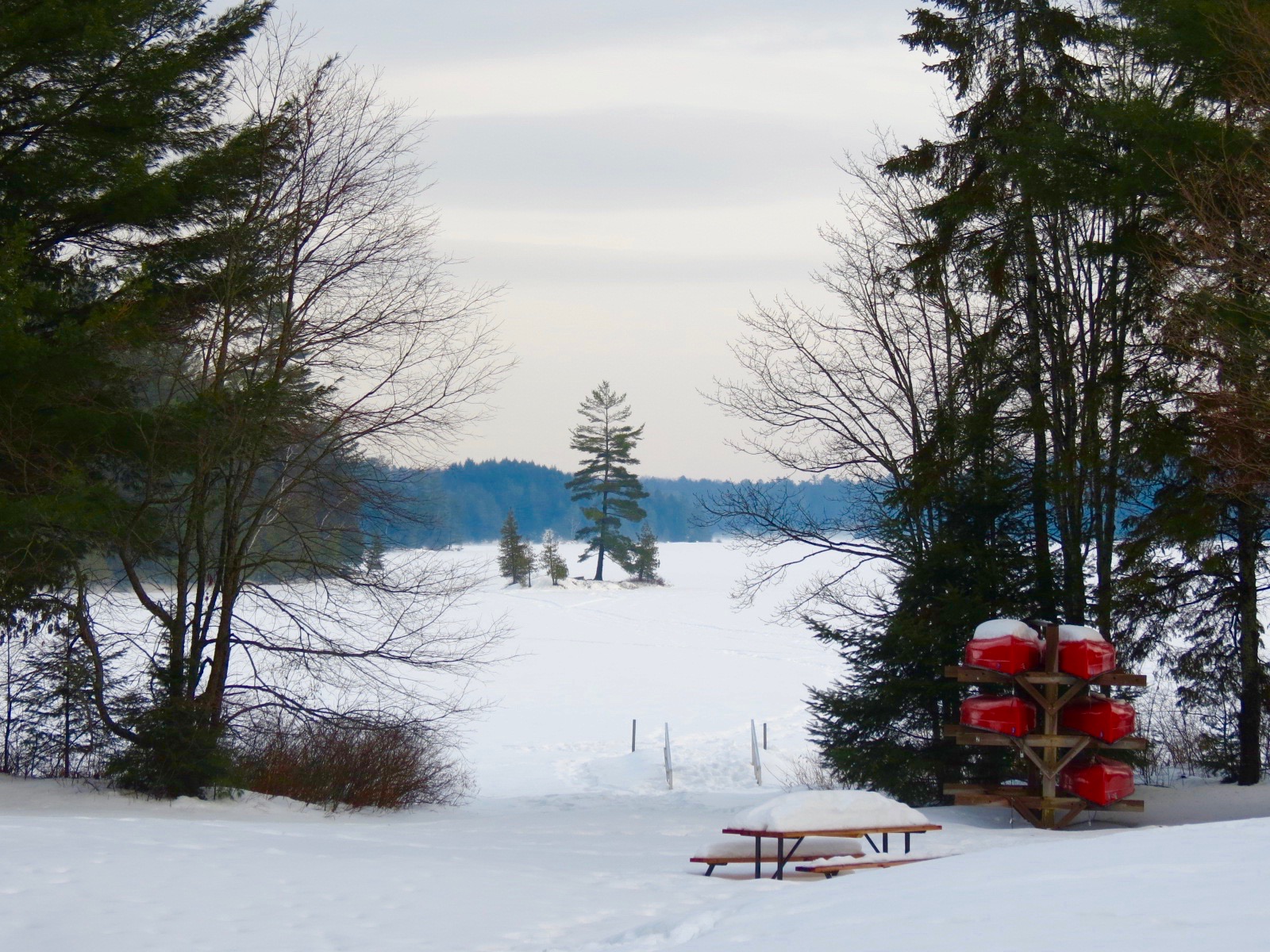
Today’s post was written by Elora VanDerLoo, bat lover and Discovery ranger at Samuel de Champlain Provincial Park. Header image: Brock Fenton.
Canada’s bats are amazing predators of the night, playing a crucial role in our ecosystems by controlling insect populations. This helps keep our crops safe from pests and reduces the numbers of bugs that are out at night.
Despite their importance and the benefits they provide, bats face many threats and bat populations are declining! What would your camping experience look like if there were no bats patrolling the night sky looking for an insect meal?
~
The Bat in the Cat?
Bats face many threats created by humans, but luckily there are things you can do to help.


Keep your cat inside, in a catio, or on leash when outside. Outdoor cats are predators of local wildlife. Bats typically only have one baby a year, so their populations are affected by even a few deaths. This protects bats and keeps your feline friend safe from cars, predators, parasites, and diseases.
Leave dead and dying trees standing on your property when safe. You can also hang multiple bat boxes in areas with varying sun exposure if Little Brown Bats or Big Brown Bats live on your property.
Multiple boxes allow bats to find relief on those extremely hot or cold days. Even if bats haven’t used a bat box yet, it doesn’t mean that they never will, and it still offers valuable habitat.
Habitat loss from growing cities and agriculture takes away forests that our bats use for roosting (shelter) and foraging (food). Building (or purchasing) a bat box is easy. Check out our blog for some simple steps to make your own.
Turn off unnecessary lights at night or use dark sky-friendly lights. Light pollution can threaten bats as it makes them more visible to predators. Bats may also avoid bright areas, forcing them to travel further and burn more energy.
Avoid going into caves or abandoned mines during the winter to reduce the spread of white-nose syndrome (WNS) and avoid waking the bats up. WNS is a disease caused by a cold-loving fungus and is only problematic for hibernating bat species.
During hibernation, WNS irritates bats’ skin, making them uncomfortable, and waking them up, using up energy (fat) reserves they need to survive until spring. In Ontario, the Little Brown Bat, Big Brown Bat, Tricolored Bat, Eastern Small-footed Myotis, and Northern Long-eared Myotis are affected by WNS. (Learn more about WNS and what parks are doing to help here).
Minimize unnecessary pesticide use and create an insect-friendly garden/farm/backyard by planting native species, this will attract bats and other cool critters to your garden! Recently some Ontario Parks have been installing pollinator gardens full of native species to boost biodiversity within the park (learn more about Ontario Park’s pollinator gardens here).
Pesticides are harmful to insectivores like our bats because they reduce insect prey numbers. With less food it’s harder for bats to gain fat stores, which they use as energy to survive the winter and have babies in the spring. Pesticides can also build up in bats from eating insects and can lead to poisoning. Pesticide poisoning uses up bats’ energy, causes reproductive issues, and causes immunosuppression making bats more susceptible to WNS.
~
Bat to the Future?
Almost half of North America’s bat species are at risk of severe population declines in the next 15 years.
In Ontario, we have eight bat species:
| Eastern Red Bat | Endangered in Canada |
| Silver-haired Bat | Endangered in Canada |
| Hoary Bat | Endangered in Canada |
| Little Brown Bat | Endangered in Canada |
| Northern Myotis | Endangered in Canada |
| Tricolored Bat | Endangered in Canada |
| Eastern Small-footed Myotis | Endangered in Canada |
| Big Brown Bat | Least Concern – Not currently at risk |
~
Bat-ter up for some great news!

Luckily, in recent years hibernating bat counts are slowly tracking upwards, as bat species are beginning to adapt to the white-nose syndrome. This includes the Little Brown Bat population which was the hardest hit in Ontario. Despite bats beginning to adapt, they still need our help to rebuild their severely depleted population numbers.
Lots of research is being done to learn more about the threats to bats, where they are found, and developing more effective conservation practices.
There’s also lots of collaborative research being done between Indigenous and non-Indigenous groups across Canada aimed towards learning more about bats and finding ways to help them. These include the Métis Nation of Ontario pilot Bat Monitoring Program, Atikameksheng Anishnawbek First Nation and the Wahnapitae First Nation acoustic monitoring research supported by the Aboriginal Fund for Species At Risk.
~
Bat-ventures await
Other things you can do when visiting a provincial park (or around your home)
- Bat in your tent or trailer? Remove bats humanely from locations you don’t want them in. Open windows and/or doors to let the bat fly outside on its own, be careful when removing a bat, or ask for assistance from a humane exclusion company (or park staff).
- Report strange behaviour, such as bats flying during the daytime or winter, or any dead bats to park staff or report it yourself by calling the Canadian Cooperative Wildlife Health Centre, the Natural Heritage Information Centre, or your local Ministry of Natural Resources office.
- Take photos of signs or sightings of bats and post them on the iNaturalist app. This data helps park staff and other community scientists monitor the local bat populations (learn more about iNaturalist here).
- Learn more about bats at Discovery programs and dispel misinformation you hear – you are less likely to fear something you understand (or learn more about bats and bat myths here).
~


